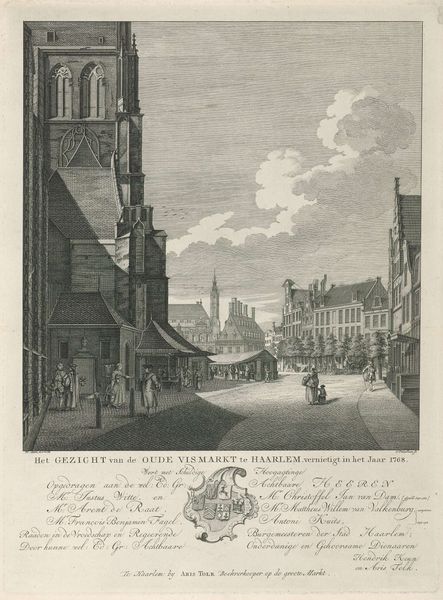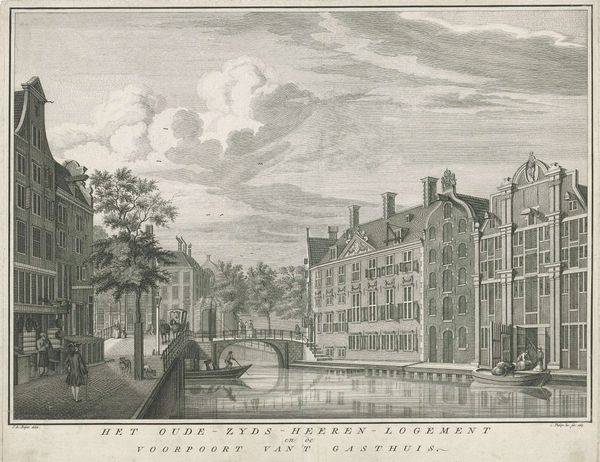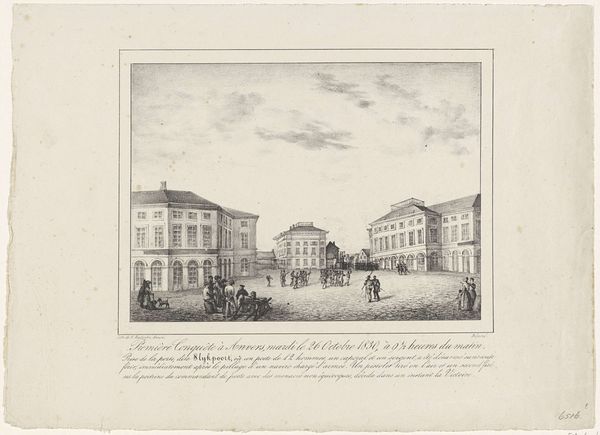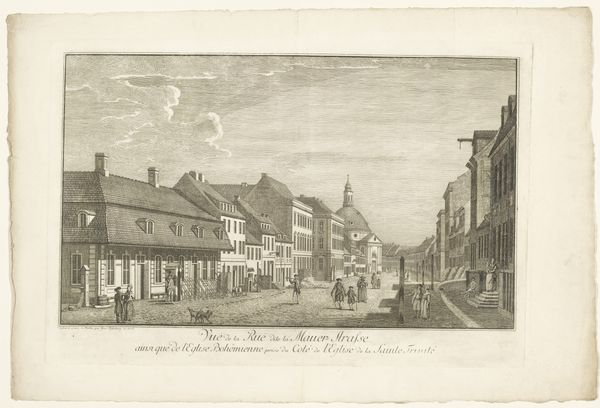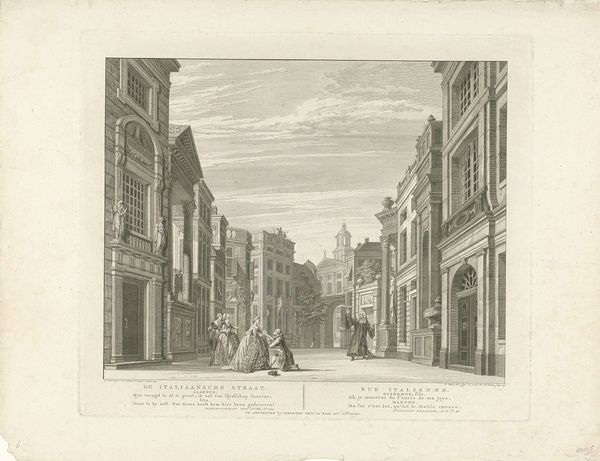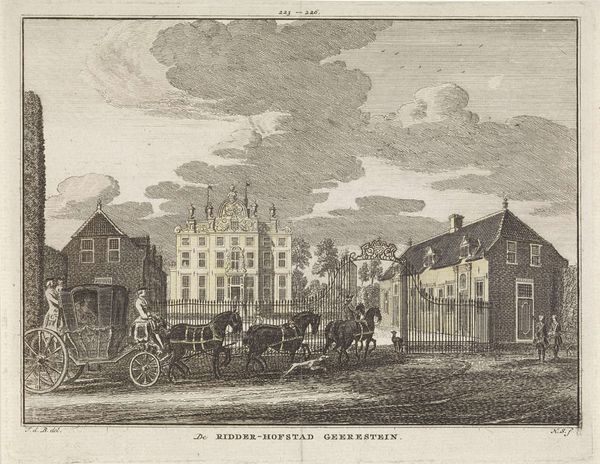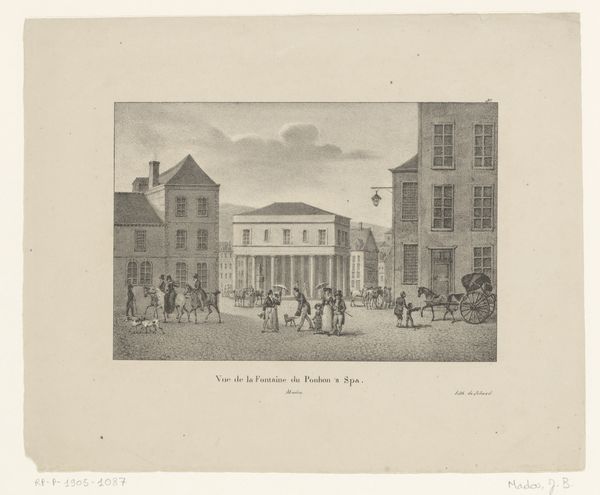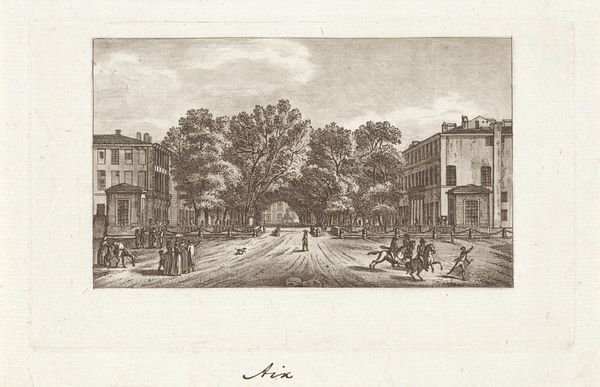
print, engraving
#
narrative-art
# print
#
romanticism
#
cityscape
#
history-painting
#
engraving
#
realism
Dimensions: height 275 mm, width 375 mm
Copyright: Rijks Museum: Open Domain
Curator: My initial response is one of constraint, I feel trapped in this gridded tableau where everything, including the architecture, seems to reinforce a rigid structure, yet it depicts chaos and upheaval. Editor: Indeed, there’s a tension here. This is titled "Verovering van de Borgerhoutse Poort, 1830," or "Conquest of the Borgerhout Gate, 1830," by J.J. Cöntgen, made between 1830 and 1831, now residing here at the Rijksmuseum. It's an engraving, a medium often used for disseminating information, perhaps political or social commentary, far and wide. Curator: The hatching technique really reinforces the two-dimensionality of the scene. Space is flattened, made almost abstract. It feels staged. It's about the play of dark and light more than about depth and action. Editor: This "staging," as you call it, relates to its historical context. This piece depicts an event during the Belgian Revolution, the fight for independence from the Netherlands. These prints served to galvanize public sentiment, to create heroes and villains. Notice the puffs of smoke rendered with dramatic, almost theatrical effect. Curator: You are right. The dynamism created by this high contrast smoke cannot distract the eye from the static nature of the architectural elements; I suppose I'm most captivated by this apparent structural opposition. It suggests that conflict and change exist superimposed to order and stability. Editor: These types of prints shaped public memory, portraying events in ways that would foster national identity. Cöntgen chose this moment carefully: The insurgents at the gate. It’s propaganda but history, filtered and framed. Even though made of lines, the impact transcends just black ink. It's about shaping consciousness. Curator: I find it quite remarkable, how even within the severe limitations of engraving, Cöntgen achieved to convey such immediacy in this pivotal historical moment. I came searching for meaning but got lost in the meticulous process. Editor: And for me, I see it as more than aesthetic craft, a captured scream about liberty for those depicted and for the nation these soldiers were trying to create.
Comments
No comments
Be the first to comment and join the conversation on the ultimate creative platform.

